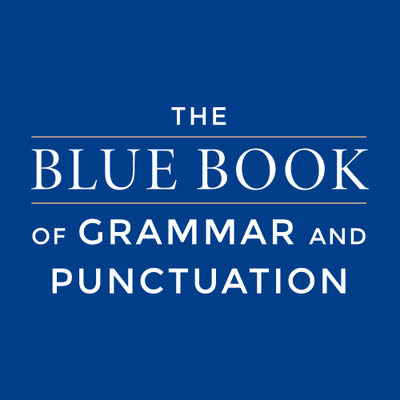
Understanding Quotation Marks in English Grammar
September 6th, 2024
00:00

00:00
Summary
- Overview of the importance and common confusion in using quotation marks
- Main rules and differences between American and British usage
- Proper use of single and double quotation marks within quotes
- Examples of correct punctuation placement in nested quotations
- American rule: periods inside all quotation marks
- Logic-based placement of question marks and exclamation points
Sources
Understanding quotation marks is crucial for mastering English grammar, yet their usage often leads to confusion. Quotation marks serve to denote spoken or quoted material and to highlight specific words or phrases. Their proper application is essential for clarity in writing, making them a fundamental aspect of punctuation and mechanics in English grammar. One common point of confusion arises from the differences between American and British English usage. In American English, double quotation marks are generally used for direct speech and titles, while single quotation marks are reserved for quotations within quotations. For example, one might write: Bobbi said, “I read an interesting article titled ‘A Poor Woman’s Journey.’” Here, the title of the article is enclosed within single quotation marks inside the double quotation marks that denote Bobbis speech. Additionally, in American English, commas and periods are typically placed inside the quotation marks, regardless of logical meaning. This rule is evident in the following example: Bobbi told me, “Delia said, ‘This will never work.’ ” Notice that the period is placed inside both the single and double quotation marks. Contrastingly, British English prefers single quotation marks for direct speech and titles, with double quotation marks reserved for quotes within quotes. In this style, punctuation such as commas and periods are placed outside the quotation marks unless they are part of the quoted material. For instance, in British English, one might write: Bobbi said, ‘I read an interesting article titled “A Poor Woman’s Journey”.’ Here, the placement of the period outside the quotation marks distinguishes it from the American style. This variance can be tricky for writers who switch between the two forms of English, but understanding these rules is fundamental for improving writing and editing skills, especially for those teaching or tutoring others, or preparing for exams or tests. To further clarify, consider the placement of question marks and exclamation points. These punctuation marks follow logical placement rules. If the quoted material itself is a question or an exclamation, the punctuation goes inside the quotation marks. For example, Bobbi said, “Delia asked, ‘Will this remote control work on my TV?’” Here, the question mark is part of Delias question and is thus placed inside the single quotation marks. Conversely, if the entire sentence containing the quote is a question, the question mark is placed outside the single quotation marks but inside the double ones. For example, Bobbi asked, “Did Delia say, ‘This will never work’?” This nuance underscores the importance of context in punctuation placement. Understanding these rules helps in grasping the proper use of quotation marks, which is essential for clear and effective communication in written English. This knowledge is not only valuable for personal writing but also crucial for those in teaching roles or preparing for standardized tests, ensuring a strong foundation in English grammar. Quotations within quotations can often be perplexing, but understanding the proper use of single quotation marks inside double quotation marks is essential for accurate and clear writing. When quoting material that itself contains a quote, single quotation marks are used within double quotation marks. This rule is straightforward in theory but requires careful attention to detail in practice. For example, consider the sentence: Bobbi said, “Delia asked, ‘Will this remote control work on my TV?’” Here, Delias question is enclosed within single quotation marks, while the outer quotation marks denote Bobbis speech. The question mark, which is part of Delias quoted question, is placed inside the single quotation marks, adhering to the logical placement rule. Lets examine another example: Bobbi told me, “Delia said, ‘This will never work.’” In this case, Delias statement is enclosed in single quotation marks, and the period is placed inside both the single and double quotation marks. This example highlights a key rule in American English: periods always go inside all quotation marks, regardless of their logical placement. This rule simplifies punctuation but may seem counterintuitive at first. When dealing with questions within quotations, the placement of the question mark depends on which part of the sentence is a question. For instance, if the entire sentence is a question, the question mark is placed outside the single quotation marks but inside the double ones: Bobbi asked, “Did Delia say, ‘This will never work’?” Here, the question mark is not part of Delias statement but part of Bobbis question, thus it is placed accordingly. Similarly, exclamation points follow a logic-based approach. If the exclamation is part of the inner quote, it is placed inside the single quotation marks. For example, Bobbi said, “Delia shouted, ‘Get your hands off me!’” In this case, the exclamation point is part of Delias exclaimed statement and is thus placed inside the single quotation marks. Conversely, if the exclamation pertains to the overall sentence, it would be placed outside the single quotation marks but inside the double quotation marks. Understanding these rules and their logical underpinnings is crucial for mastering the use of quotation marks within quotations. Proper punctuation placement ensures clarity and precision in writing, which is essential for effective communication. This knowledge is particularly valuable for those improving their writing and editing skills, teaching or tutoring others, or preparing for exams or tests. By adhering to these guidelines, one can confidently navigate the complexities of nested quotations in English grammar.